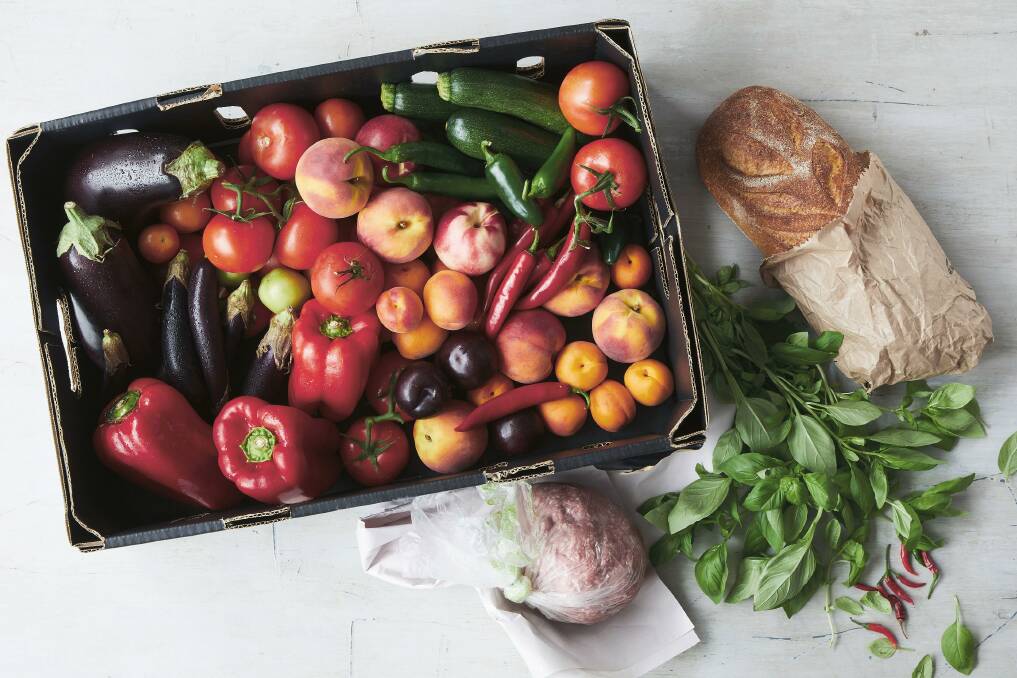
Go and take a look in your fridge. Is there an avocado, one you may have paid about $4 for, ready for the bin? What about a limp bunch of coriander? Some carrots that have lost their crunch? Some ends of cheese?
Subscribe now for unlimited access.
$0/
(min cost $0)
or signup to continue reading
What about in the pantry? Is there a half-open packet of nuts? What about a jar of random spice you needed one teaspoon of in a recipe you cooked three months ago?
How much of it is going to end up in the bin? According to the Department of Agriculture, Water and the Environment, every Australian throws out about 300kg of food each year, that's every one in five bags of groceries, about $3800. It costs the national economy about $20 billion each year.
So what's the answer to solving food waste? While the government has set up a National Food Waste Strategy, here's one thing you can do right now.
Go and buy Use It All: The Cornersmith guide to a more sustainable kitchen.
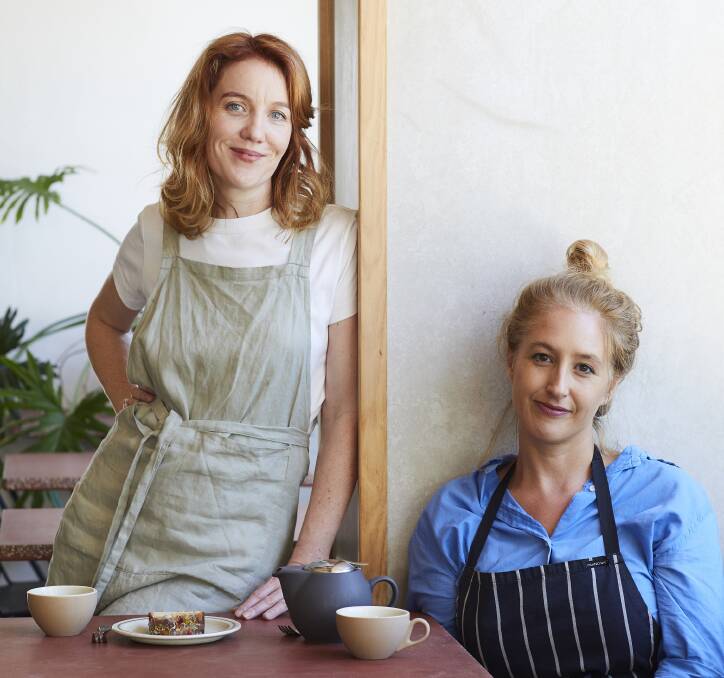
Authors Alex Elliott-Howery and Jamiee Edwards are part of the Cornersmith community in Sydney. Elliott-Howery and her husband James opened the cafe in 2012, in 2013 the cooking school, where Edwards now teaches, opened operating with a shared philosophy of eating seasonally and reducing wastage, showing how a few well chosen ingredients could make a memorable meal.
Use It All follows that premise. Each chapter features a seasonal basket of produce, an example of a weekly shop.
Our cover photograph, for example, is a summer basket containing eggplants, capsicum, zucchini, tomatoes, stonefruits, basil, chilli, bread and mince. There are five full meals, 11 sides, some snack and sweets, preserving ideas and a few hacks to use those last little crumbs so to speak.
Elliott-Howery and Edwards have been friends since their 20s and when their children were little the question of "what's for dinner" started to take on a bigger meaning.
They wanted to figure out how to feed their families efficiently, affordably and sustainably. It's about looking in the fridge, the pantry or the freezer and thinking how can I use what's available to make a meal.
"I'm just a really enthusiastic home cook," Elliott-Howery says. "Having the kids got me thinking about food and wondering how to be sustainable in an urban environment, and raise kids and work and, you know, do all of those things.
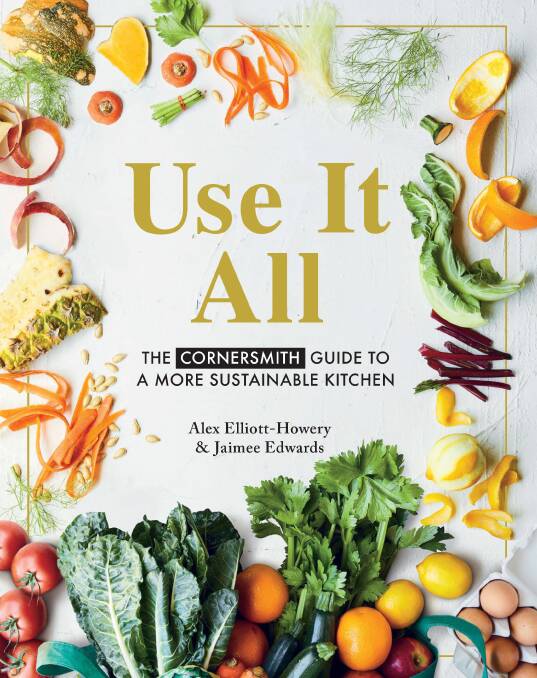
"I got really interested in cooking from scratch, because I felt like that was actually what we needed to do in order to be more resourceful, less wasteful, and understand our food system a bit better, like connect with food again."
And it was about connecting with the neighbourhood too. She'd walk around Marrickville, in Sydney's inner west, knocking on people's doors asking if she could pick fruit off their trees, or if they had any tomatoes they didn't need. People were able to bring excess backyard produce to the cafe.
Their kitchens were full of conversations about preserving and pickling and fermenting, about how to turn scraps into something delicious, or how to get the most out of homemade stocks and so on.
"But for all our love of cooking from scratch, we know that people are time poor and on a budget," Elliott-Howery says.
"The ability to pull a meal together quickly comes with knowledge of ingredients and flavours, and in our classes at Cornersmith we spend as much time focusing on these things as we do the recipe.
"This book is the result of us trying to figure out how to eat sustainably, work full time and keep our sanity."
- Use It All: The Cornersmith guide to a more sustainable kitchen, by Alex Elliott-Howery and Jamiee Edwards. Murdoch Books, $39.99.
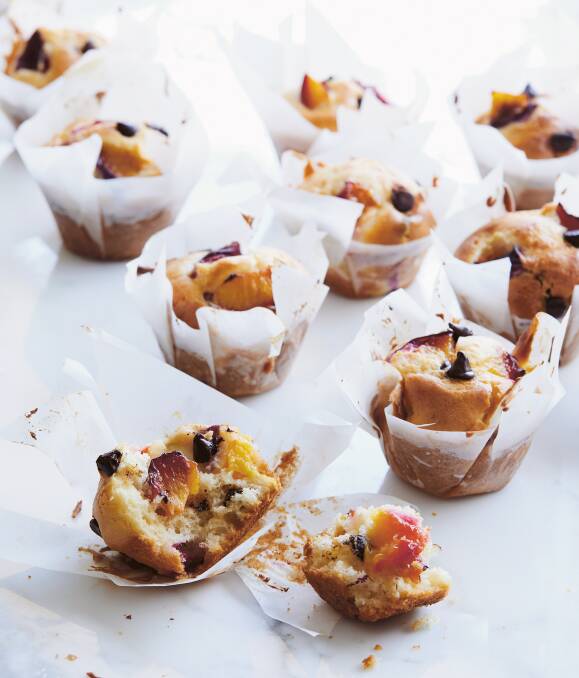
Cornersmith muffins
Baking muffins kind of just happens to you as a parent. One day you find yourself obsessed with snacks. Enter the muffin. Even if you aren't a baker, they are the baked good that can be whipped up quickly and easily. As for what goes in a muffin, may we suggest that you avoid getting too earthy. Use the fruits or vegetables that are everyone's favourite and finish off the more delicious pantry strays, such as coconut, chocolate chips, ground spices, seeds and nuts. Stick to what you know is delicious and these muffins will always be the answer to lunchbox and snack dilemmas.
Ingredients
380g self-raising flour
1 cup caster sugar
1 egg
150ml flavourless oil, such as vegetable or sunflower oil
1 cup full-cream milk
200g chopped fruit or squeezed and dried grated vegetables (apples, pears, stone fruit, berries, zucchini, pumpkin)
100g pantry strays (nuts, seeds, coconut flakes, chocolate chips, sultanas)
Method
1. Preheat the oven to 180C. Whisk the flour and sugar in a bowl and set aside. In a separate bowl, beat the egg, then slowly whisk in the oil. Gradually add the milk, whisking as you go. Make a well in the centre of the flour mixture and slowly incorporate the wet mixture. Gently stir in your choice of fruit or vegetables and pantry strays.
2. Divide the batter among 12 greased holes of a standard muffin tin (or line the holes with paper cases) and bake for 20-25 minutes or until a skewer inserted into one of the muffins comes out clean.
Combinations we like: nectarine and coconut; plum and almond; cherry and chocolate chip; raspberry and grated apple; zucchini and sultana.
Makes 12.
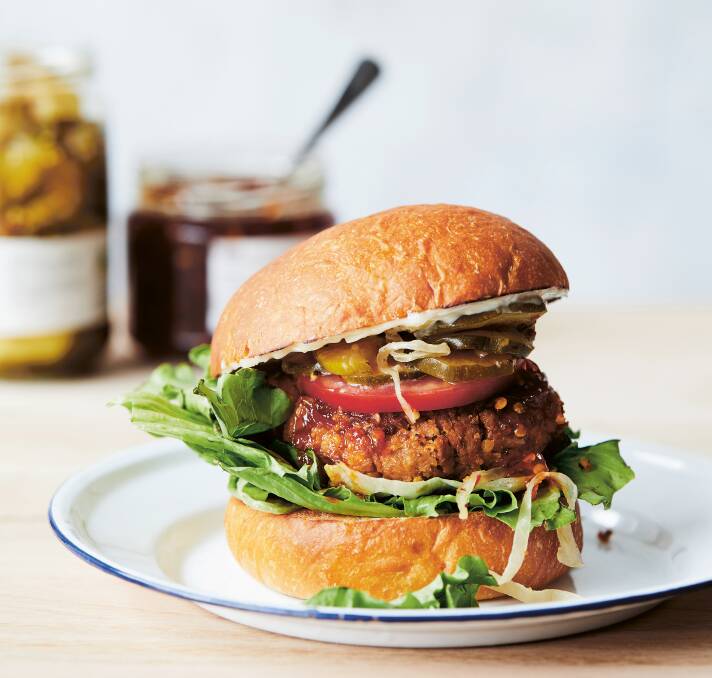
Less-meat mince for burgers
You never really outgrow burgers. As a kid, they're your favourite food; as an adult they are pure nostalgia. Burgers are a symbol of good times: eating in the back garden; road trips; special treats. They are well loved in both our houses, and coming up with a recipe that was going to reduce the amount of meat we are eating and convince the kids was a challenge. In this recipe we keep it very simple: a small amount of mince, brown lentils (because we are sneaky), and seasoning that doesn't get carried away. You could use more aromatic herbs if you want a more sophisticated burger, or enjoy its simplicity and let the condiments do the talking.
Ingredients
1 onion, roughly chopped
3 garlic cloves, roughly chopped
1 handful torn parsley leaves
1 tsp salt
1/2 tsp freshly cracked black pepper
1 1/2 tsp smoked paprika
1 tsp dried thyme or oregano
200g canned or cooked brown lentils
300g minced meat of your choice
1 tbsp Worcestershire sauce
1/2 cup fresh breadcrumbs
vegetable oil, for cooking
Method
1. Place the onion, garlic, parsley, salt, pepper, paprika and dried herbs in a food processor and blitz until finely chopped. Add the lentils and blitz again until roughly combined - don't let it turn into a paste!
2. Tip the mixture into a bowl, then add the mince, Worcestershire sauce and breadcrumbs. Using your hands, mix together until combined.
3. Form the mixture into four equal-sized burger patties and refrigerate for 30 minutes to 1 hour.
4. Heat a little vegetable oil in a frying pan over medium heat or heat a barbecue flat plate to medium and cook the burgers for five minutes on each side.
5. Serve on soft buns with pickles, chutney, mayonnaise, chilli jam, tomato sauce, leafy greens, slices of tomato, cheese ... the works!
Makes 4-5 patties.
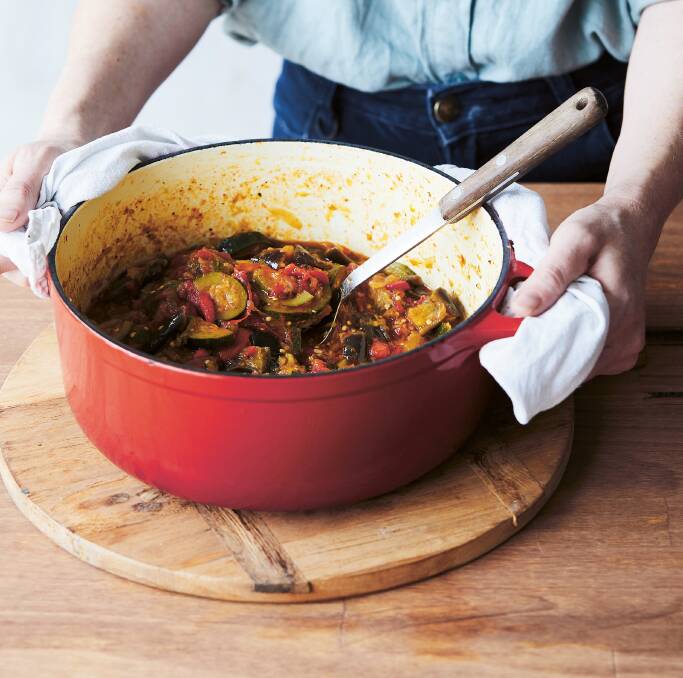
Ratatouille
This dish is an excellent way to use up summer vegetables, especially those that have sat in the crisper for too long. The low and slow cooking time disguises any blemishes and wrinkles and turns tired vegetables into a harmony of summer flavours. We often find that kids don't like eggplants, but if you purée the ratatouille in a food processor it turns into a cleverly disguised vegetarian sauce to use in a pasta bake or lasagne.
Ingredients
1-1.5 kg mix of eggplants, red capsicums and zucchini
salt
1/2 cup olive oil
1 onion, thinly sliced
3 garlic cloves, minced
1/2 tsp freshly cracked black pepper
a few bay leaves, a sprig of thyme or left-over basil stems
2 ripe tomatoes or 400g canned tomatoes
Method
1. If you're using eggplants, cut them into 3-4 cm chunks, then place in a bowl and sprinkle with salt, using one teaspoon of salt per eggplant. Mix well and set aside. Thinly slice the capsicum and cut the zucchini into thin rounds.
2. Heat the olive oil in a flameproof casserole dish over medium heat and sauté the onion and capsicum for 20 minutes until soft and sweet. Add the minced garlic, 1/2 teaspoon salt, the pepper and herbs and sauté for another minute.
3. Tip the eggplant in a tea towel and give it a good scrunch to remove the salt and liquid, then add to the dish and sauté for five to seven minutes. Add the zucchini and tomato, mix well, then cover. Reduce the heat to the lowest setting and gently cook for 30 minutes.
4. Remove the lid and give everything a good stir. It's up to you when you want to stop cooking the ratatouille: 30 minutes will give you a light, fresh summer stew, while another 30 minutes or more will result in a rich colour and deep flavour as the vegetables start to fall apart and meld into each other. A final 15-30 minutes of cooking, uncovered, will thicken the ratatouille, which works well if you're looking to use it as a pasta sauce or lasagne filling.
5. Before turning off the heat, taste and stir through more salt and pepper if needed.
Makes 1.3kg.
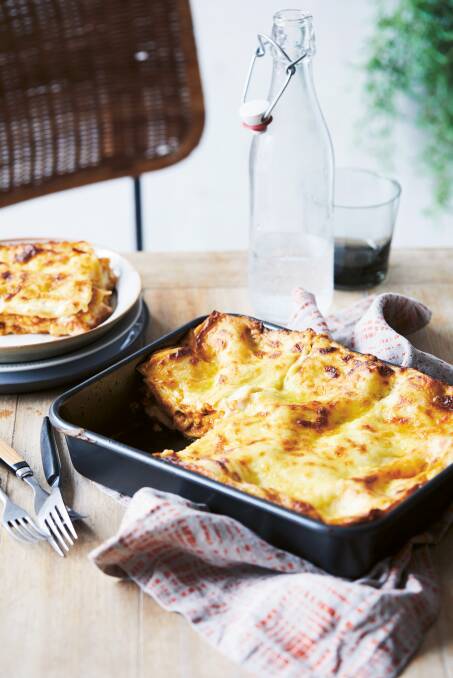
Summer harvest lasagne
This lasagne is gobbled up every time it hits the table and it appears the kids haven't cottoned on to the fact that it's full of their most-hated vegetables: eggplants and zucchini. Make this a day or two after you've made a big batch of the ratatouille. Most of the work is done, so all you need to do is assemble and cook.
Ingredients
olive oil
3 cups ratatouille
1 quantity cheese sauce (see below)
6 large lasagne sheets
1/4 cup grated parmesan
salad of your choice, to serve
Method
1. Preheat the oven to 180C. Lightly oil a 20cm square baking dish.
2. Place the ratatouille in a food processor and blitz to suit who you are feeding. A complete purée disguises all the vegetables and creates a smooth and decadent lasagne, while a chunkier vegetable mixture will give you a hearty, more rustic-looking lasagne.
3. Make the cheese sauce, then layer lasagne sheets, ratatouille and cheese sauce until the dish is full and all the elements are used up. Finish with a layer of cheese sauce and a little grated parmesan.
4. Bake in the oven following the lasagne packet instructions and serve with a green salad.
Cheese sauce
Ingredients
2 cups full-cream milk
60g butter
40g plain flour
11/2 cups grated mature cheese, such as tasty, cheddar or gruyere
salt and freshly cracked black pepper
Method
1. To make the cheese sauce, heat the milk to just below boiling point. In another saucepan, melt the butter and flour over low heat and stir to make a roux, but do not let it brown! Add the warm milk, 1/2 cup at a time, and stir constantly with a wooden spoon or whisk until you have a thick white sauce. Add the grated cheese and salt and pepper to taste, and stir until melted.


